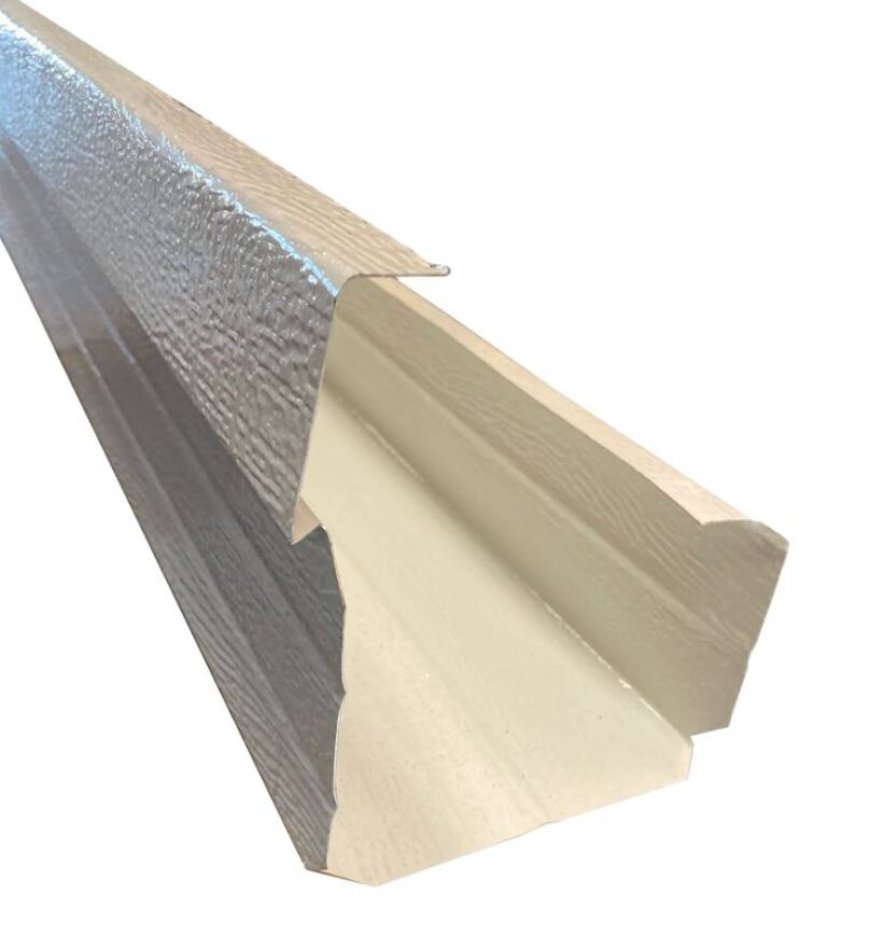Aluminum Gutters: The Ultimate Guide for Your Home or Business

When it comes to protecting your property from water damage, one of the most important elements to consider is your gutter system. Among the various materials available for gutters, aluminum is one of the most popular choices due to its durability, low maintenance, and aesthetic appeal. In this guide, we’ll delve into everything you need to know about aluminum gutter and why they might be the right choice for your home or business.
What Are Aluminum Gutters?
Aluminum gutters are a type of rainwater drainage system made from aluminum, a lightweight and corrosion-resistant metal. These gutters are designed to channel water off the roof and away from the foundation, helping to prevent water-related damage to the property. Aluminum is an ideal material for gutters because it combines strength with the ability to withstand harsh weather conditions, making it a top choice for homeowners and businesses alike.
Why Choose Aluminum Gutters?
1. Durability and Corrosion Resistance
Aluminum is naturally resistant to rust and corrosion, which makes it perfect for areas with high rainfall or humidity. Unlike steel or iron gutters, aluminum does not easily corrode when exposed to water, ensuring that your gutter system lasts for many years without deteriorating.
2. Lightweight Yet Strong
Despite being lightweight, aluminum is surprisingly strong and capable of withstanding extreme weather conditions such as heavy rain, snow, and wind.
3. Low Maintenance Requirements
Aluminum gutters require minimal maintenance to keep them functioning properly. They don’t rust or corrode like steel, so there’s less worry about structural integrity. Regular cleaning to remove debris is usually all that's needed to keep the gutters flowing smoothly.
4. Aesthetic Appeal
Aluminum gutters are available in a wide range of colors, making it easy to find an option that complements the look of your home or business. Whether you prefer a classic white or a more modern matte black, aluminum gutters can be powder-coated to match your exterior design.
For more details click here
Types of Aluminum Gutters
Aluminum gutters come in several different styles and configurations. Understanding these different types can help you make an informed decision about which is right for your property.
1. K-Style Gutters
The K-style gutter is the most common type of aluminum gutter in residential applications. It has a distinctive "K" shape when viewed from the side, which provides both aesthetic appeal and effective water drainage.
2. Half-Round Gutters
Half-round gutters have a circular shape and are typically found in older, more traditional homes. They are popular because of their elegant look and ability to handle large amounts of rainwater. However, half-round gutters tend to be more expensive and require more frequent cleaning compared to K-style gutters.
3. Seamless Gutters
Seamless aluminum gutters are custom-cut to fit the exact measurements of your roof, meaning they don’t have any seams or joints. This reduces the likelihood of leaks and clogs because there are fewer areas where debris can accumulate or water can escape.
How to Install Aluminum Gutters
Proper installation of aluminum gutters is crucial for ensuring their longevity and effectiveness. If you’re considering installing aluminum gutters yourself, here’s a general overview of the process. However, keep in mind that professional installation is often the best option, as it ensures proper alignment and drainage.
Step 1: Measure the Roofline
Before installation, you need to measure the entire roofline to determine the length of gutters needed. Make sure to account for any corners or downspouts required to guide water to the ground.
Step 2: Install Gutter Hangers
Gutter hangers are essential for securely attaching the gutters to the roofline. These hangers should be spaced every 24 to 36 inches along the length of the gutter to prevent sagging. They should be positioned slightly lower than the roofline to ensure proper water flow.
Step 3: Attach the Gutters
Once the hangers are in place, you can attach the gutters to them. If you are using seamless gutters, they will likely be delivered in pre-cut lengths to fit your roof. For other types, you will need to cut the gutters to the appropriate length. Secure the gutters using screws or nails, ensuring they are level and properly aligned.
Step 4: Install Downspouts
Downspouts are essential for directing rainwater away from the foundation. Position the downspouts at the lowest point of the gutter system, making sure they are securely fastened to the wall of the building.
Step 5: Check for Proper Water Flow
Once the gutters and downspouts are in place, run water through the system to ensure it flows smoothly. Check for any leaks or blockages and make sure the water is directed away from your foundation.
Maintaining Aluminum Gutters
To ensure your aluminum gutters continue to perform well, regular maintenance is essential.
1. Clean the Gutters Regularly
Leaves, twigs, and other debris can accumulate in your gutters, preventing proper water flow. Clean your gutters at least twice a year, or more often if you have a lot of trees near your property. Use a ladder, gloves, and a small scoop to remove debris, and rinse the gutters with a hose to clear any remaining dirt.
2. Inspect for Leaks and Damage
Check your gutters for leaks, holes, or other signs of damage. If you notice any issues, make repairs immediately to prevent water from escaping and damaging your property.
Conclusion
Aluminum gutters are an excellent choice for homeowners and businesses seeking a durable, low-maintenance, and cost-effective rainwater drainage system. With their resistance to corrosion, lightweight design, and aesthetic versatility, aluminum gutters offer long-lasting protection against water damage. Whether you’re installing new gutters or replacing an old system, aluminum gutters can provide reliable performance and a stylish addition to your property.

 myubinetus
myubinetus